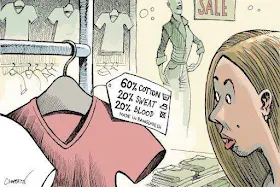 |
| Fracking poisons massive amounts of water with a unknown toxic soup. But you can always buy 'clean' (and expensive) water at the mall. |
- Natural gas is not and never has been a clean fuel.
- The government of British Columbia wants to export up to four trillion cubic feet of natural gas per year from BC.
- Natural gas has advantages over coal and diesel fuel. When combusted natural gas has fewer greenhouse gas emissions. But when the source is considered - shale rock - a broader view is required.
- Hydraulic fracturing or fracking operations free gas trapped in rock. This uses tremendous amounts of water, sand and toxic chemicals to create cracks or fractures in the rock that allow the trapped gas to be released.
- In northeast BC today, fracking operations at just one one shale gas pad with a dozen wells on it will toxify the equivalent of all the water in Saanich’s Elk and Beaver lakes, where Canada’s Olympic rowing teams train.
- The greenhouse gas emissions associated with natural gas produced from such water-intensive operations are poorly understood. Some models estimate that the emissions associated with shale gas production are only slightly higher than those for conventional gas, while others place them on par with coal.
- The US Environmental Protection Agency, among others, underestimate actual emissions by as much as half.
- Gas production in BC’s remote Horn River Basin near Fort Nelson produces unusually high amounts of CO2, which must be stripped away before the gas can be piped and used. Currently, the stripped CO2 is simply vented to the atmosphere rather than captured and stored.
- Neither government nor industry appears keen to do field studies required to determine the impacts of this extraction method.
- Recently, members of the Fort Nelson First Nation raised objections to a potentially massive giveaway of water rights in their traditional territory to pave the way for accelerated shale gas production.
- Responsible governments would acknowledge the obvious: We can’t in good conscience proceed with fracking in the absence of basic information - information that is obtainable given the will, and which they should be obliged to publish.
- The BC government is proposing a quintupling of natural gas production in BC.







































